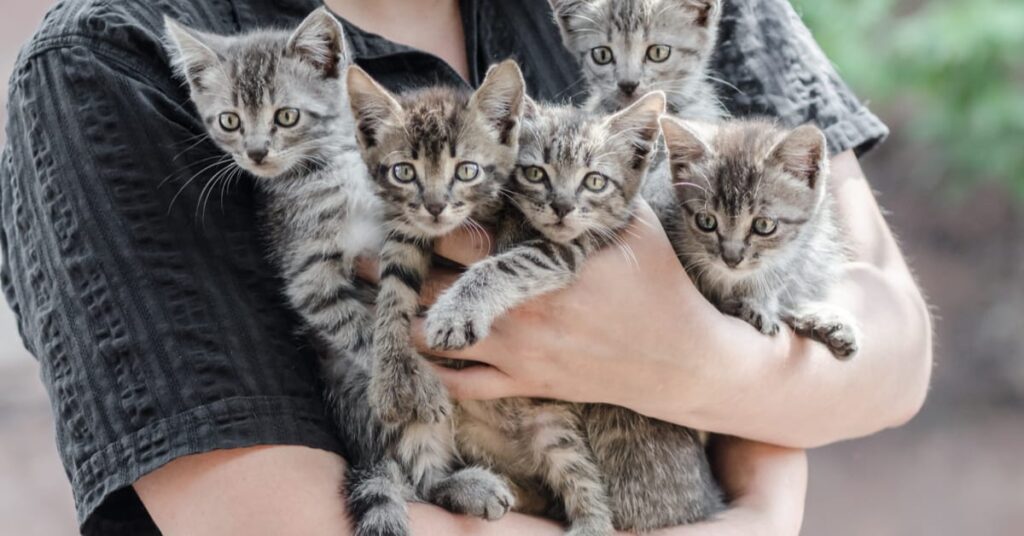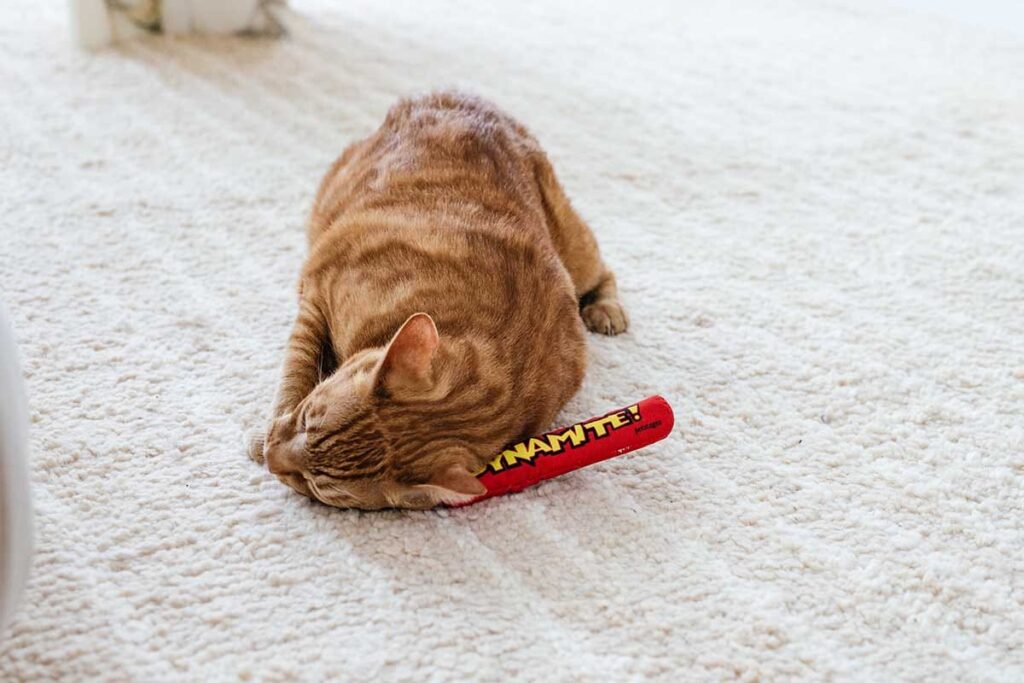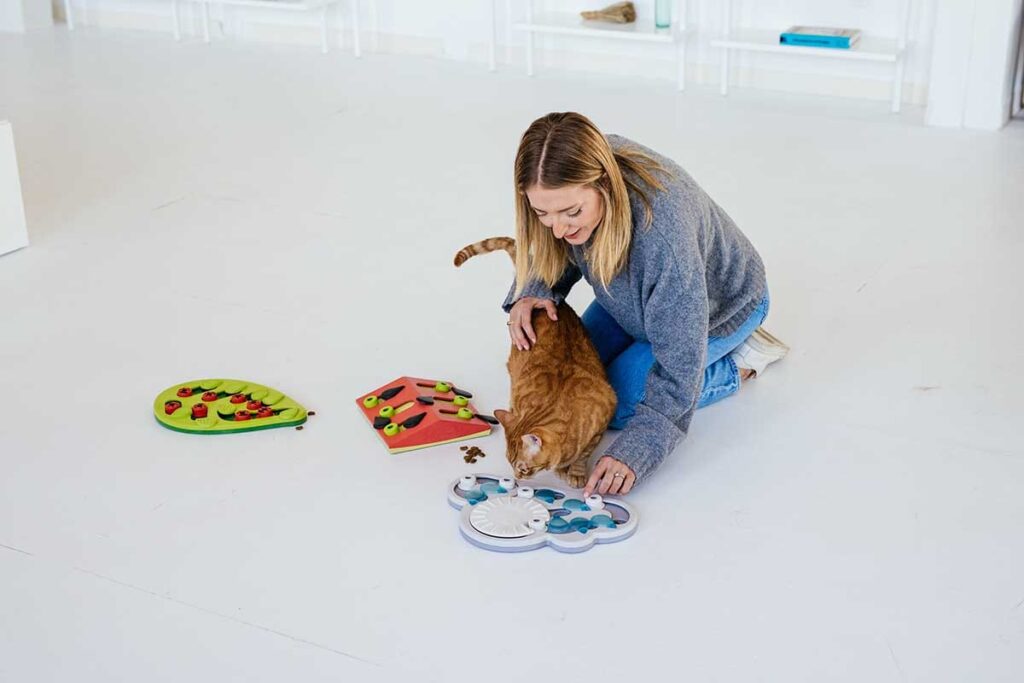As a child in the rural south, kitten season was always an exciting time of year. One of my grandmother’s outdoor kitties would sneak into the storage shed and give birth to a litter of tiny mewling kittens. The next time I was over, my grandmother would put her finger to her lips and beckon me to follow.
She’d quietly open the door and we’d tip toe inside to see a litter of kittens with their eyes still closed and clambering over one another to nurse or find a comfortable spot. They’d stretch their arms (and claws) out eager to experience the world. Or, at least to eat.
Later in life, I wondered if there really was a “kitten season” or if cats had babies year-round. It turns out there is, and they do!
When Is Kitten Season?

Historically, cats give birth in warm months. So depending on where you live, kitten season can last from early spring to fall. However, cats don’t limit themselves to a season. They can get pregnant and give birth multiple times a year leading to an explosion in the cat population.
A typical litter can be four to eight kittens though the largest litter of kittens recorded was 19! Some cats have fewer of course. Obviously, even if a cat only has one litter of four kittens a year, that’s still a lot of kittens around.
Some reports say there are 400 million cats in the world!
But back to the kitten season. First, the female cat has to be “ready” and then she calls in the males.
What Does it Mean for a Cat to Be “In Heat?”

When kitties reach puberty, their reproductive mechanisms kick in. In female cats, that’s known as the estrous or reproductive cycle. This is also known as “heat.”
A cat’s heat cycle lasts an average of seven days though it can fluctuate. During this time, female cats might show more affection to their owners; they may be more vocal than usual. They might even urinate in unusual places outside of the litter box to leave a special scent filled with pheromones and hormones designed to attract intact males (tom cats.)
She can breed anytime during this phase if she mates, and she can mate multiple times with multiple tomcats within 24 hours. Yes, the kittens can have multiple fathers, which accounts for the diversity in the litter. The act of mating releases the eggs and then the female adult cat carries those kittens to term.
The pregnancy length for cats is roughly two months, after birthing and a recovery period, she can do it all again.
Where Do Cats Have Their Kittens?
As you may guess, pregnant cats will usually look for a quiet location for giving birth. Under a porch, in the back of the closet, my grandmother’s storage shed, anywhere that’s not a high traffic zone is a possibility.
How Can Cat Lovers Help During Kitten Season and Beyond?

Firstly, spaying and neutering your pet cats will prevent new litters of kittens. Veterinarians say kitties enter puberty around six months or 26 weeks of age so that’s the optimal time to sterilize them before they go into heat.
In the U.S., there are an estimated 42.7 million pet cats with another 73 million feral cats and kittens. While some of those feral cats are “community cats” fed by local people, such a high population causes animal welfare groups to advocate for spaying and neutering.
You may have heard of trap-neuter-return (TNR) programs. This is when animal lovers trap stray or feral cats for neutering. Once neutered, they’ll return to the community cat colony. Many of these community cats have a clipped ear indicating sterilization.
If you’re interested in helping your local humane society with their spay/neuter program, reach out and ask them. They’re always looking for volunteers.
On that note, don’t be too eager to capture a seemingly stray cat. Many pet cats enjoy the freedom of exploring their neighborhood and anecdotes abound of cats who cultivate multiple “families” in a neighborhood — including one family who boarded someone else’s cat when they went on vacation thinking it was their feline.
In other words, some would-be cat rescuers are accidentally separating the adult cat from their human families.
Such independence extends to a mother and her litter. If you stumble upon a litter of kittens with no mother around, don’t be so sure she’s not coming back. It’s common for momma cats to leave her little ones unattended while she goes hunting for food to bring back.
The SPCA recommends watching the kittens for at least 8 hours to make sure these are truly orphaned kittens. Once you know she’s really not returning, depending on where the kittens are, you can get creative with pouring flour around the kittens (to see pawprints), webcams, or anything else that will let you know if those kittens are being looked after.
If you know the mother cat isn’t returning, and you can take care of them, then make sure they have food, water, and a safe and dry space. If you really want to pamper them, consider a cat bed.
Depending on their ages, they may respond to bottle-feeding or they may eat canned wet kitten food. You can call your local shelter to take them in but they may not have room since many shelters are overwhelmed – especially, during kitten season.

Be a Foster Family
If you can foster a kitten or two from your local animal shelter, give them a call. Most shelters are grateful for foster families and many have a formal foster program. Of course, many foster parents fall in love with their charges and offer forever homes!
If you already have an adult cat, here’s how you can introduce your new foster in a way that keeps everyone happy.
Now that you know kitten season is here, consider fostering a kitten (or two.) Your local shelter likely has plenty of happy kittens waiting for pet parents to welcome them into their foster homes. Will you open yours?

